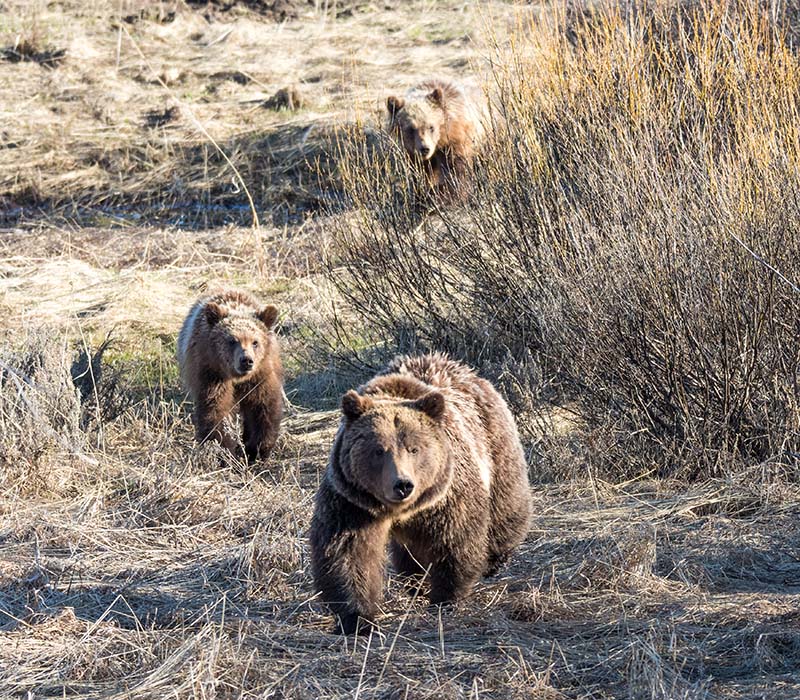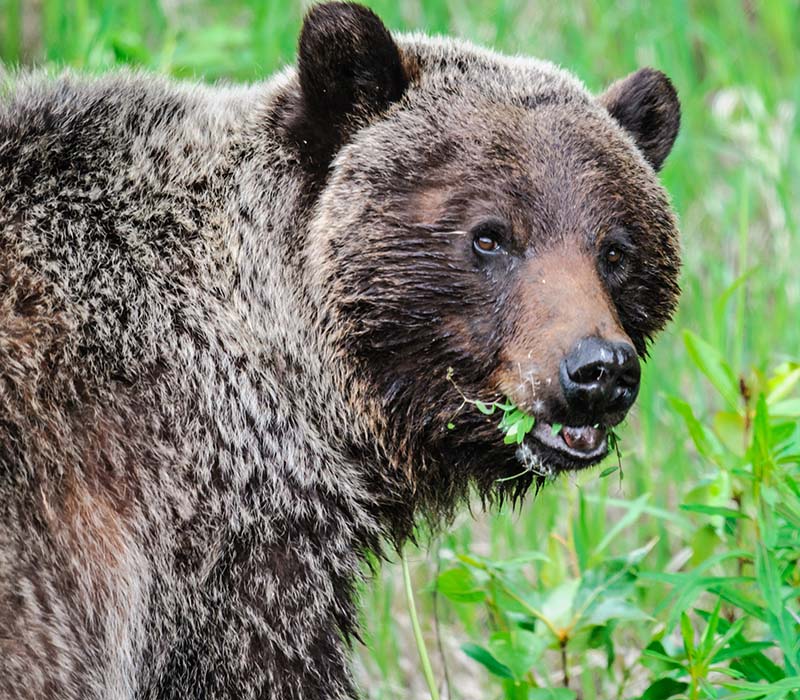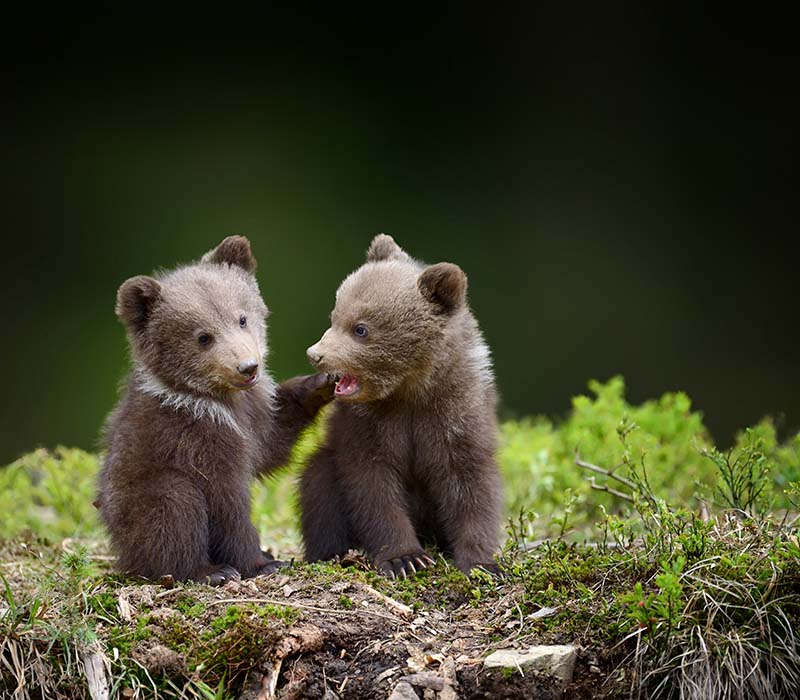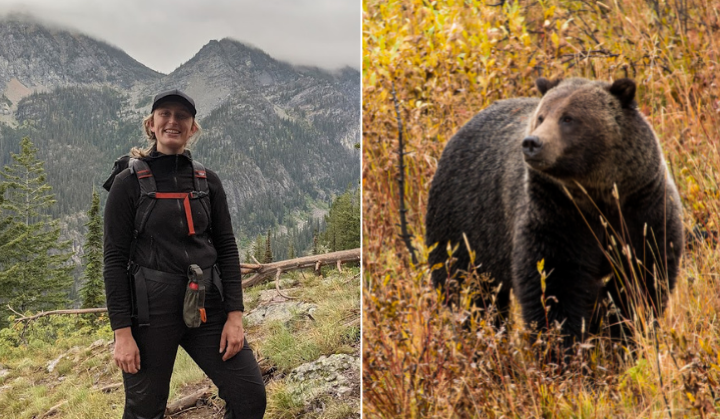Y2Y’s U.S. program manager Jessie Grossman shares how your support keeps this mammal moving
What makes grizzly bears so special?
For me, grizzly bears represent the interconnection of nature and people. As an “umbrella” species, the health and connection of grizzly bear populations reveals the bigger picture well-being of the world they — and we — live in.
Research in the Canadian Rockies shows that at least 16 other large and medium-sized mammals such as lynx, wolves, bighorn sheep and deer, also benefit from the role of grizzlies as an umbrella species.
Doing right by grizzly bears also does a whole world of good for the plants, animals, lands and waters people rely on.
Doing right by grizzly bears also does a whole world of good for the plants, animals, lands and waters people rely on.
That’s why we focus on reconnecting grizzly bear populations in the Yellowstone to Yukon region, including from the U.S.-Canada border into the Yellowstone and Bitterroot Ecosystems.
As a potential connector between western Montana, northern Idaho and Greater Yellowstone, the Bitterroot is key to the goal of a thriving, interconnected grizzly population across the Northern Rockies, whose habitat has long been fragmented, resulting in isolated and disconnected populations.
Where are the bears?
Over the past few years, news of grizzly bear sightings in this important area shows we’re doing something right.
When I first heard of a bear that traveled all the way from northwest Montana into the Bitterroot, and back north again, I thought of the incredible strength, persistence and skill this took, much of which is unknown to us.
I’m in awe of the animal’s ability to travel hundreds of miles from home and return again. Even bears translocated from their home ground often make a beeline back to where they were picked up. This bear’s travels represent a hopeful future for bears to move across the landscape, and naturally reconnect to their former range.
A special thanks to you
As U.S. program manager for Y2Y, I see first-hand how your contributions keep these mammals moving. Whether through bear safety programs or private lands conservation, these projects don’t happen without your help.

I’m optimistic for the future of grizzly bears and our evolving relationship with them. With your help, we can keep grizzly bears going down the path of least resistance for the greater good of all creatures.
Fast facts about grizzly bears

Female and male grizzly bears move differently; males move farther, while females have “stepping stones” of habitat, expanding their range through generations.

We share 80% of our DNA with grizzly bears! Douglas Chadwick reminds us of this unexpected connection in his new book, Four-Fifths a Grizzly, and how Y2Y’s big-picture work facilitates interconnection.

Grizzly bears are one of the slowest reproducing land mammals. Cubs stay with their moms for 2 to 3 years, and female grizzly bears don’t begin reproducing until they are 4 to 5 years old.
Partners in habitat protection
Vital Ground, Y2Y, and a landowner worked to conserve 80 acres (32 ha.) of land in northwestern Montana. The project helps maintain a critical connection for wildlife like grizzly bears between the Cabinet Mountains to the north and the Bitterroot Mountains to the south.
You can help bears year round
From winter slumber, to spring awakening, and seasonal “fattening up,” your monthly gifts can help keep bears safe.


